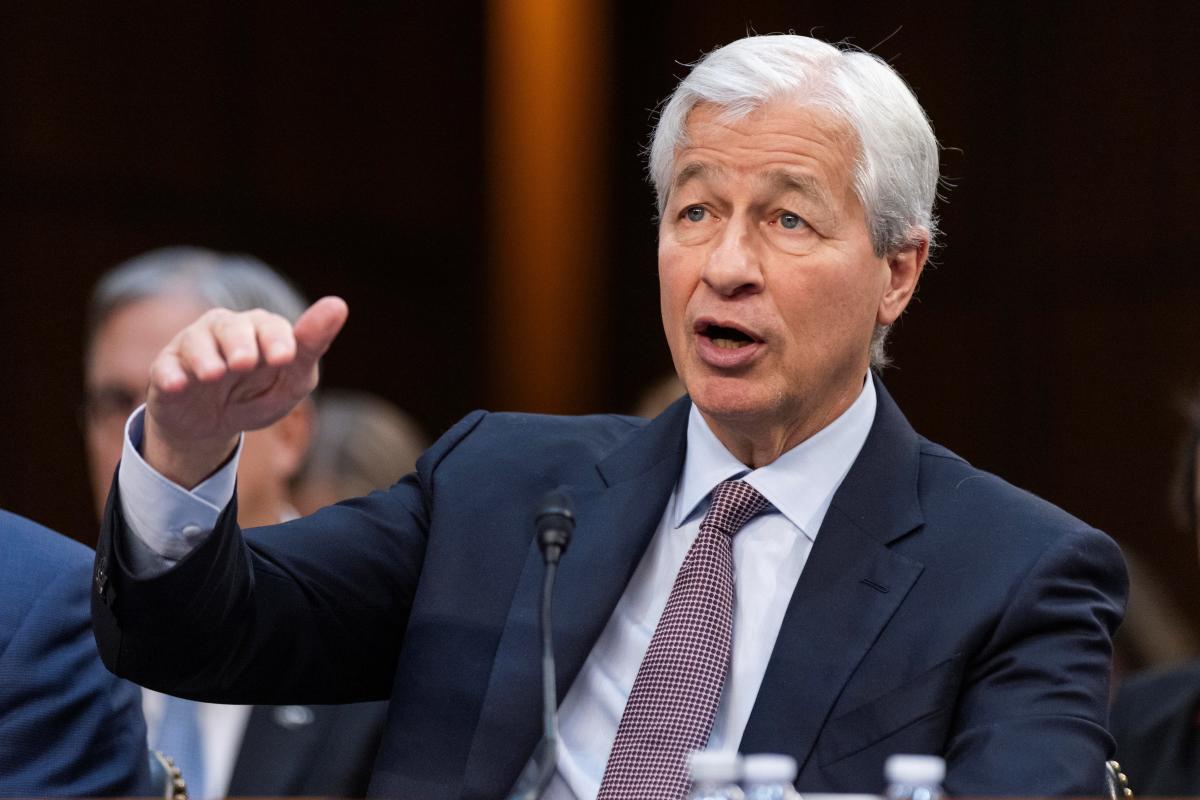A key source of revenue for three giant banks fell in the first three months of the year, showing that even the largest financial institutions are grappling with the same challenges faced by the rest of the industry as interest rates remain high.
JPMorgan Chase (JPM), Wells Fargo (WFC) and Citigroup (C) said Friday that their net interest income fell from the fourth quarter to the first quarter. JPMorgan fell 4%, Wells Fargo fell 4% and Citigroup fell 2%.
Net interest income is a crucial metric for many banks because it measures the difference between what banks earn from their assets and what they pay out from their deposits.
Smaller banks have struggled to step up this measure in the last year as interest rates and deposit costs soared. Now there are some signs in the first quarter that high interest rates are starting to weigh on growth even at the country’s largest lenders.
JPMorgan said in a news release that its net interest income fell due to “compression in deposit margins and lower deposit balances.”
Depositors seek higher returns, as they do at smaller banks, and invest their money in products like certificates of deposit, for which JPMorgan has to pay a higher interest rate.
“As customers move out of checking and savings accounts, they may choose CDs,” Chief Financial Officer Jeremy Barnum told reporters on Friday in response to a question from Yahoo Finance. “This means the bank pays more for internal migration.”
“This is the type of deposit migration we expect for the remainder of 2024,” he added.
It is certainly still true that the major banks are better able than their competitors to survive a phase of increased interest rates and that they can continue to make a lot of money from lending.
Citigroup’s net interest income, for example, was $1 billion higher than expected in the first quarter, and JPMorgan has revised its estimate of net interest income for the full year 2024 to $89 billion (excluding trading) from a previous estimate of $88 billion ) raised.
However, compared to 2023, this was the same. Shares of JPMorgan fell more than 5% on Friday as investors absorbed the news.
JPMorgan’s total profit still rose 6% from a year ago to $13.4 billion, beating Wall Street expectations.
“We are a little cautious”
Both Wells Fargo and Citigroup said they are also paying more for their deposits.
At Wells, average cost of deposits was 1.74%, higher than 1.58% in the fourth quarter and 0.83% in the year-ago period. Total profit fell 7% compared to the previous year.
At Citigroup, the average interest rate on deposits rose to 3.70%, up from 3.61% in the previous quarter and 2.72% in the year-ago period. Total profit fell 27% compared to the previous year.
Citigroup also announced an ambitious restructuring of the bank that will result in thousands of job losses. It said 7,000 jobs had been cut as part of a goal to reduce headcount by 20,000 by 2026.
Shares of Wells Fargo and Citigroup were flat Friday.
There were also a number of positives in the bank results on Friday. JPMorgan set aside less money for future loan losses and investment banking fees rose 21% to $2 billion, a sign that a Wall Street revival may be underway.
However, the majority of this came from taking on debt and not from consulting work.
“We’re a little cautious,” Barnum said of any pick-up in M&A activity.
JPMorgan CEO Jamie Dimon also issued further warnings about the future development of the US economy, repeating a theme he made clear in his annual letter to shareholders published earlier this week.
“Many economic indicators remain favorable,” Dimon said. “However, looking forward, we remain aware of a number of significant uncertain forces.”
He pointed to wars and geopolitical tensions, “persistent inflationary pressures” that “may likely continue,” and a Federal Reserve campaign of quantitative tightening.
Dimon said he would be willing to raise rates up to 8%. Asked by Yahoo Finance on Friday about the prospect of interest rates remaining high for longer, he said: “Higher interest rates alone are not that important, what is important is the reason.”
“If it’s due to stagflation, that’s of course negative. If it’s due to, you know, healthy growth. That’s actually pretty good.”
Click here for a detailed analysis of the latest stock market news and events affecting stock prices.
Read the latest financial and business news from Yahoo Finance
